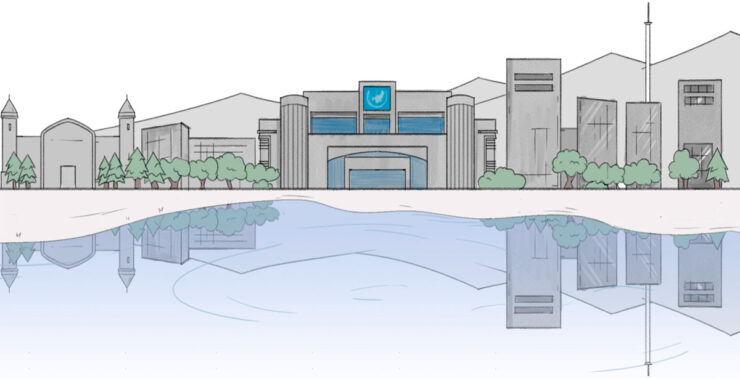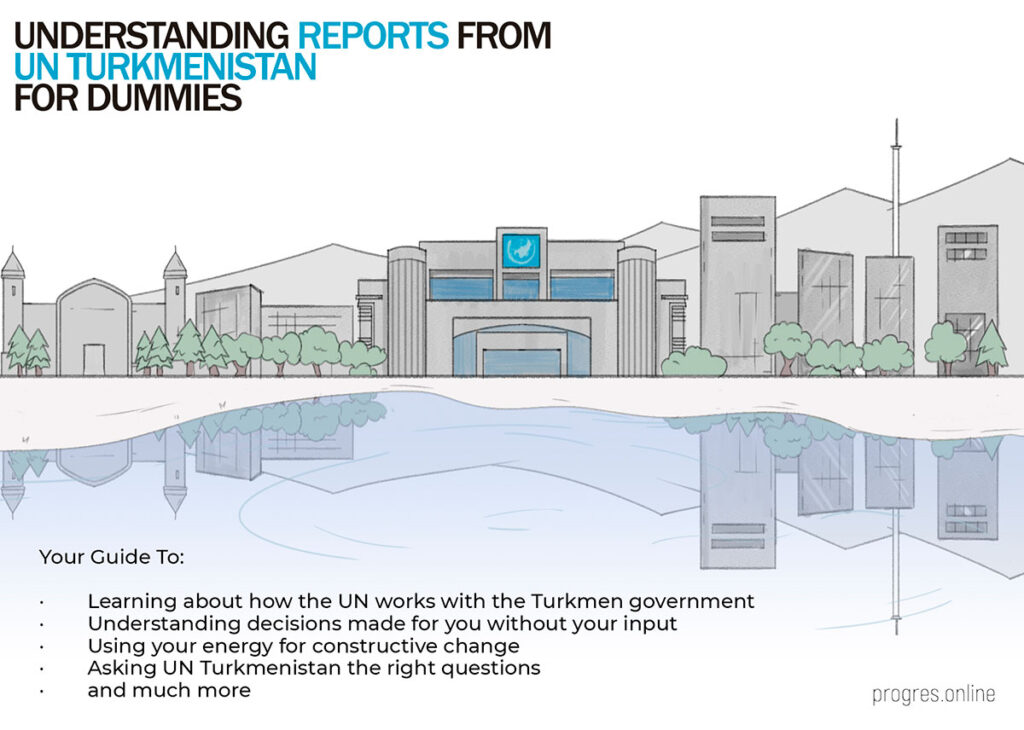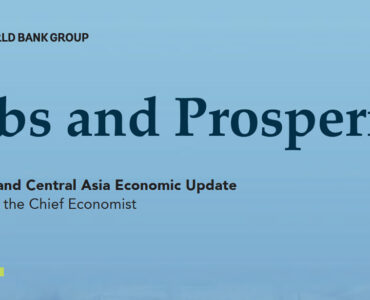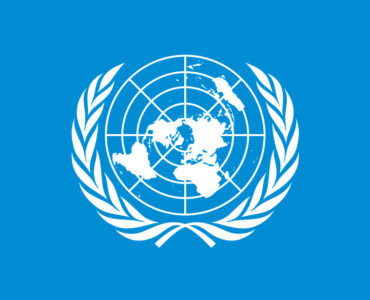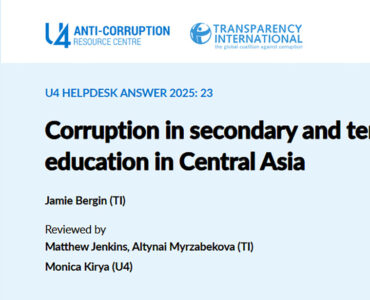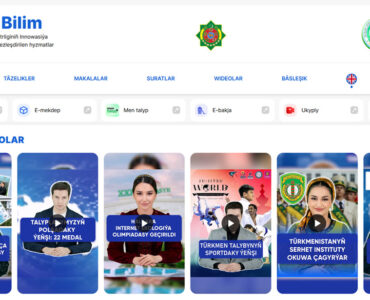Every year the UN Turkmenistan publishes the Annual Results Report. The 2021 United Nations Country Annual Results Report was published in May 2022 in English and Russian. It is not available in the Turkmen language, not even as a summary. And most likely you do not read these reports anyway. That’s why we have read all 50 pages and decided to share with you some exciting facts that the UN does not share in their report. These facts are important for you to know so you can have an informed discussion with the UN staff in Turkmenistan either online or offline.
If you have an informed opinion on issues raised in the UN report, please share with us at @progres.online or write to us at turkmen.progres@gmail.com.
AT A GLANCE:
- The report does not provide any single statistic from the government and it reads like the content that you see at the State Committee of Statistics – lots of words, long, boring, repetitive sentences that lack meaningful insights. It has nice pictures though!
- When the UN says “we developed National Strategy and Action Plan X” it means that it was developed in consultation with the government, not you. Public is not consulted. Nowhere in the report it talks about consultations with the public. It looks like public communication is not a part of the UN’s mandate in Turkmenistan. And by the way, if you decide to read any National Plan, you will not find them online.
- The UN is accountable only to the Government of Turkmenistan and not you. This mostly means that you can get to know about their programs only if – you live in Ashgabat, have a VPN to access Internet and speak English or Russian. Sometimes the state media covers some of their work in a dry language. But since very few of you follow the state media, you might have no idea what we are talking about here. This also means that you get to know about any National Plans the last, once they have already been approved by the government and the UN.
- Occasionally the UN publishes information about the program inputs in some of their programs. But they are not program results, so do not confuse inputs for results. Inputs are number of workshops delivered, number of meetings arranged, number of equipment procured… However, is conducting workshops and meetings an effective way to influence behaviors and to drive change? It is like you know your desire to use Instagram would not change just because your teacher told you not to use VPN. If all of your friends are on Insta, you want to be there! The same applies here. So, use your analytical skills to question and to ask for what’s more important: number of meetings or results? And by the way, there is no independent assessment of how these inputs actually impact the poor education and health outcomes in Turkmenistan.
- The details of government’s financial contribution to the national programs is not shown and explained. If it is explained somewhere, then the UN Turkmenistan can contact us so we can share it with you.
Coming up next!
We took the statements from the UN’s report with no сhanges and provided our analysis as well as concerns underneath them.
“No COVID-19 in Turkmenistan, but we helped anyways”
UN: While no cases of COVID-19 have been officially reported, the UN continued its critical interventions supporting national health sector challenged by the global COVID-19 pandemic to prevent entering and spreading of infection in the country. Hence, the key area of cooperation with the Government in 2021 was implementing a joint response to the global risks of COVID-19 pandemic through the Preparedness and Response Plan for Acute Infectious Disease (CPRP), and the Immediate Socio-Economic Response Plan to acute infectious disease pandemic in Turkmenistan (SERP).
Turkmenistan has not reported any cases of COVID-19 infection and deaths. How can one make “critical interventions” in public health sector without knowing the vital statistics? The government of Turkmenistan has not published the results of the last 2012 census. This means we do not know how many people are born and die every year in our country or the age distribution of the population. These are vital and basic statistics to respond to an epidemic or pandemic.
In April 2020, the UN and the government designed the Socio-Economic Response Plan (SERP). The Plan was supposed to help mitigate the negative impact of the global pandemic on the most vulnerable groups of the population and the socio-economic situation in Turkmenistan. One billion dollars have been committed to this. To start with, we know nothing about the most vulnerable groups of the population. Who is considered vulnerable? There is also no information on how this one billion was spent in Turkmenistan and what results were achieved. How did the most vulnerable people benefit from it?
To remind, no UN agency or international organization in Turkmenistan called upon the Turkmen government to publish the COVID-19 statistics. And, does the UN realize that ‘preventing Covid-19 from entering and spreading in the country’ also meant hundreds of Turkmen citizens desperate to travel home were stranded in other countries due to strict travel restrictions? And they still are!
UN: Support was provided in dissemination of infographic/information materials on COVID-19 vaccination and delivering of life-saving equipment, hygiene and infection prevention and control supplies worth USD 750,000. WHO, UNICEF, UNFPA provided regular up-to-date information on pandemic prevention, including 8 video messages on parenting tips, radio programs on ECD, importance of vaccination, information sessions for children, youth and people with disabilities to population through its digital platforms (e.g. Yashlyk.info, social media channels and mobile applications), and addressing misinformation during pandemic for mass-media.
The COVID-19 information provided by UNICEF Turkmenistan did not mention the word COVID-19 in its public messaging in 2020-2021. Saglyk.org has shared the detailed analysis with USAID (the funder in this сase) of UNICEF’s content shared with the public at the peak of COVID-19 in the country. UNICEF Turkmenistan approached COVID-19 public health emergency as a regular WASH (Water, Sanitation and Hygiene) campaign and not as a public health emergency. Materials were not country specific; messaging did not address the reality in the country and the content was predominantly in Russian and English, not in the language most people would understand. The most visible Public Service Announcement funded by UNICEF was by Ashir Dade who talked about the importance of washing fruits at the peak of COVID-19 in 2020 in Turkmenistan.
UN: WHO trained over 600 health care workers to implement a newly developed national hospital-tailored COVID-19 capacity surge plan. National testing laboratory strategy was developed with extensive support of WHO and 10,000 pcs of PCR test kits procured to ensure all laboratories have sufficient test kits for testing of COVID-19. Development of case management and treatment protocols for treatment of ARI/SARI/COVID-19 cases based on new evidence, scientific references and updated WHO recommendations. UNICEF strengthened infection prevention through risk communications and procurement support. 17,000 biohazard bags, 15,000 safety boxes for safe waste disposal and 2,000 child sphygmomanometers for pediatric intensive care units were procured. Over 3,400 soap dispensers and 20,000 litres of liquid soap supported health workers’ compliance with IPC standards in 1,700 public health centres of the country. 600,000 surgical masks and other personal protective equipment (PPE) items were distributed among medical workers.
How do we know these things actually happened? No information on case management, treatment protocols for doctors, or distribution of PCR test kits have been made available to the public. There was no public information on how the distribution plan and monitoring have been done to make sure the equipment actually reached the hospitals and the medical staff, and have been distributed free of charge. Such secrecy opens up doors for corruption and abuse.
“No widespread access to the Internet, but we still communicated online”
UN: The rubric on COVID-19 was launched within the UNFPA-run Yashlyk.info website dedicated to youth sexual and reproductive health with more than 96,000 users reached since the launch of the rubric.
Any time when you see “E-government” or “digital” in the title of UN projects in Turkmenistan, you should ask the UN – what VPN do you use to develop and access these platforms? (E-Government, Digital Civil Registry, Digital Banking). Internet in Turkmenistan is one of the slowest, the most expensive and the most restricted in the world. Unfortunately, Yashlyk.info is blocked in Turkmenistan and there is no way to have 96,000 users for a blocked website in the Turkmen language. Never mind that 70% of the public does not even have access to the Internet.
“No TB, HIV in Turkmenistan, but we helped there too”
UN: WHO and UNDP continued supporting implementation of the National TB programme, including strengthening patient-centered approach in TB care, update of national guidelines on tuberculosis infection prevention and control (TB IPC), clinical management of drug-resistant TB(DR-TB), management of TB in children, preventive treatment and systematic screening, conducting research, introduction of innovative treatment methodologies and TB procurement, including laboratory tests, equipment (GeneXpert machines), first-line medicines for nearly 2690 adult patients and 110 children, second-line medicines for 850 multi-drug resistant TB patients, reagents, and consumables for TB diagnostics. 927 multidrug and extensive drug-resistant TB (M/XDR-TB) patients (compared to target of 850 patients) were enrolled for quality second-line treatment, including in prison setting; 6,133 home visits were made and 80 educational sessions for TB patients and their families reaching 821 people were conducted.
No TB statistics, no national guidelines on TB (or any other diseases), clinical management of drug resistant TB (DR-TB), preventive treatment and systemic screening, any country related research have been made public as a result of this engagement. There is no publicly available distribution plan and reporting on how the procured equipment has been used. The fact is that the number of patients with multidrug resistant TB in Turkmenistan is increasing as USAID hints at in its reporting. These numbers are also not communicated by the Ministry of Health. All these raises a lot of questions from the public on epidemiological situation, corruption and abuse.
UN: The country also received a $1, 5 million COVID-19 grant from the Global Fund.
By now you must be seeing a pattern here, do you? Exactly! No one knows how this funding was used since there is no publicly available information. Also, good to know that eligibility for this fund is determined by the country’s income classification and disease burden. By income level, Turkmenistan as an upper-middle income country would not qualify for this funding. However, it ranks ‘high on disease burden’ for tuberculosis. This should give you an idea of how serious the issue must be. You got it! The lack of statistics on TB does not mean we do not have people in Turkmenistan struggling with this highly infectious disease.
Chronic disease of missing statistics and information
UN: SDG data generation remained a priority in 2021. The Government established the National SDG database in the State Statistics Committee in 2021, which will further strengthen the national system for data collection, monitoring, and reporting. The Government of Turkmenistan has remained committed to promoting financing for SDGs.
What about making SDG data sharing with the public a priority? The data has been missing for many years on the UN SDG portal for Turkmenistan. The State Statistics Committee does not report any statistics. In fact, maybe we should remove the word ‘statistics’ from its title. A better name for it might be – “the State Text Committee,” because all we see on their website is endless texts.
UN: We are proud to contribute to Turkmenistan’s success in both addressing the pandemic and maintaining positive GDP growth of over 6% in 2021. Official data shows that GDP growth rate remained strong in 2021 at 6.2%, though international estimates somewhat differ from the official figures.
Wait…what? There is a pandemic in Turkmenistan? UN never shared that secret.
Yes, the international estimates differ a lot from the official figure of “GDP growth of over 6% in 2021”. Due to the lack of adequate data of reliable quality, the World Bank has not been publishing economic output, income, or growth data for Turkmenistan since 2018. IMF reported 4.9% GDP growth in 2021, while the ADB reported 5% and EBRD cited 6.2% reported by Turkmen authorities. Which GDP growth the UN is proud to contribute to? And by the way, how difficult is it to accurately calculate the country’s economic output? If you asked your partner how much they make a year and they could not give you an exact number and started talking like the State Statistics Committee, that is a point for concern, don’t you think?
UN: By the end of 2021, the UN system in Turkmenistan delivered over USD23 million, which is considerably high delivery rate given all the COVID-19 related constraints. However, the analysis has shown that the potential to deliver is much higher if there is joint commitment of all partners involved.
What were the delivery rates prior to Covid-19?
UN: The World Bank has become one of the most significant contributors, apart from the Government of Turkmenistan, having provided US $20 million to procure medical equipment, laboratory tests and to build the capacity of medical workers. A US$20 million World Bank loan was approved to reinforce the country’s response efforts and preparedness against the health and social risks of the COVID-19 pandemic.
The World Bank shares limited information on this loan with the public and the Bank does not engage with the public on specific issues related to this loan such as public’s access to information in the Turkmen language, stakeholder engagement plan and poorly designed grievance mechanism. Saglyk has reached out to the World Bank project team with specific questions related to the stakeholder engagement plan but it was unable to get concrete answers”. This behavior is at odds with the best practices that the World Bank preaches publicly in its engagement with governments.
Donate to support Turkmen analysts, researchers and writers to produce factual, constructive and progressive content in their efforts to educate the public of Turkmenistan.
SUPPORT OUR WORKUN: Extensive support was provided in preparation for the Census 2022 which, when completed and results made public, will provide access to most of the SDG indicators.
The last time we checked, the results of the last 2012 census were still not published. UNFPA Turkmenistan provides support in preparation for the Census 2022. Why is the UN supporting the Census 2022 anyway? Can it convince the government this time to release the results of the 2022 Census? Or will the two review the data behind closed doors leaving the public in the dark?
UN: 10 pediatric clinical protocols were updated and mobile application of the IMCI pocketbook for Android and IOS platforms was developed. 91 teachers participated in reproductive health and gender equality trainings within the Basic Life Skills raising awareness on HIV and other issues. The capacity of the National HIV Prevention Centre was strengthened through knowledge building of WHO latest recommendations on HIV and AIDS and update of HIV diagnostics algorithm and counselling guidelines.
No clinical protocols are shared with the public. No educational materials, no statistics have been generated as a result of this engagement. Let us search for this mobile application, how is it called again? Or wait, the public in Turkmenistan cannot access Internet and Google services get periodically blocked.
UN: The study revealed that $7.5 million invested in family planning by 2030 would be needed to contribute to achieving reproductive health in Turkmenistan.
According to UNICEF MICs 2019, 50% of women do not use contraception in Turkmenistan. Meanwhile, the government reduced the gestational age for abortion from 12 weeks to 5 weeks. Prices for contraceptives that women and girls pay out from their pockets have gone up. The government promotes in the media the pronatalist messaging of 8 children families. Who is going to invest into family planning in Turkmenistan? And which specific state policy the UN will support?
9 organizations fit all UN purposes
UN: The following Turkmen organizations cooperated with the UN and receive funding and financing.
- Union of Industrialists and Entrepreneurs;
- National Red Crescent Society;
- Nature Protection Society;
- Women’s Union;
- Youth Organization;
- Keyik Okara;
- Beyik Eyyam;
- Blind and Deaf Society;
- Yenme.
It is good to have nongovernmental, nonprofit organizations in Turkmenistan that provide direct services to the public. It is important to highlight that these governmental nonprofit organizations (GONGOs), partners of the UN, mostly work in Ashgabat and their activities do not extend beyond the capital. Most of them do not have any online presence (websites, contact information) and they do not share any information about the projects they implement with the UN and their results. It is impossible to register and operate an independent nonprofit organization in Turkmenistan. The UN staff in Turkmenistan avoids all communication with independent civil society groups.
UN: UNICEF and the National Red Crescent Society of Turkmenistan signed the Programme Cooperation Agreement for 2021-2025, which will strengthen resilience of the education sector, local communities, and the vulnerable population in reducing disaster risks through school and community-based interventions in the Aral Sea area of Turkmenistan.
How can UNICEF Turkmenistan work with the partner without addressing allegations of grand corruption at the National Red Crescent Society of Turkmenistan?
WTO Turkmen saga
UN: As part of efforts to enhance the country’s investment attractiveness in 2021 Turkmenistan obtained an international sovereign credit rating, and adopted a new Foreign Trade Strategy 2021-2030, which among others envisions the country’s accession to the WTO by 2030.
The Foreign Trade Strategy is not available to the public. The UN does not clarify what specific reforms Turkmenistan must undertake to join the WTO. The road is rocky and uncertain. There are major structural and governance issues that the government needs to overcome. In February 2022, Turkmenistan got the status of an acceding country to the WTO. Turkmenistan became the last former Soviet republic to establish a formal relationship with the WTO.
And in case you were wondering, in 2021 Fitch assigned Turkmenistan credit rating of B+ with outlook of ‘stable.’ But what is behind this ranking? Fitch reports that “Turkmenistan’s ratings balance a low governance ranking (as measured by the World Bank), unconventional economic policies, a challenging business environment and some data deficiencies against solid public and external balance sheets underpinned by large gas reserves. There is a large divergence between official and parallel market exchange rates, which flatters key credit metrics.”
No Turkmen Refugees Response Plan and nothing on Human Rights
UN: In response to the developments in Afghanistan, under UNHCR’s lead, a 2021 Refugee Preparedness and Response Plan (RRP) was prepared. According to the proposed activities in the Plan, the UN system in Turkmenistan would be able to provide support in case of an influx of refugees from Afghanistan.
The state media does not report any refugees coming to Turkmenistan. Which “influx of refugees” is the UN talking about? And why the UN is not raising the issue that millions of Turkmens are suffering from: travel restrictions to and from the country and expired Turkmen passports which they can’t renew from abroad. What about supporting the repatriation of immigrant citizens who are desperate to return to Turkmenistan?
UN: One of the remarkable achievements of 2021 was the approval of the National Human Rights Action Plan for 2021-2025 (NHRAP for 2021-2025) which progressively reflects Universal Periodic Review (UPR) Recommendations (2018) and SDGs.
We leave it up to you to process and respond to this “remarkable achievement.” One quick note though: No one knows who the Ombudsman is and where to look for her office in Turkmenistan.
In transition, transiting to 30 years of market economy transition
UN: ITC continued development of the Trade Facilitation Portal (TFP) by populating related information on 14 import and export product groups as well as building capacities of national stakeholders in managing the portal. The TFP is a step-by-step guide to cross-border trade procedures and aims to resolve non-tariff barriers to enhance country’s compliance with WTO Trade Facilitation Agreement.
In 2020, Turkmenistan has teamed up with the International Trade Centre (ITC) to establish an online trade facilitation portal in the country under the Ready4Trade Central Asia project funded by the European Union. After numerous training and workshops, the portal, that should be a one-stop-shop for Turkmen cross-border laws, regulations, duties and taxes, is not online. The website of the partner, the Ministry of Trade and Foreign Economic Relations of Turkmenistan does not have any information about TFP.
UN: UNDP actively engaged in the development of digital public services and building capacities of civil servants in digital management.
We are just wondering, if the UN Turkmenistan has ever tried to use “digital public services”. Because to the public, ‘digital’ and ‘public services’ do not make a working combination. No ministry in Turkmenistan has a funсtioning website that responds to public’s inquires and needs. Ministry’s emails do not work. For example, the website of the Ministry of Health has not not worked for six months in 2022. Ministries do not engage with citizens and they still use the outdated communication by “registered mail”.
Graveyard of pilot projects
UN: UNDP promoted waste sorting and management in selected pilot residential areas by implementing joint activities with the relevant national entities such as Ashgabat city municipality and Nature Protection Society. As a result, 80 tons of plastic, 25 tons of wastepaper and 15 tons of glass were processed in the capital city of Ashgabat.
This project has started in 2019. Why is it taking four years to do this in Ashgabat? How about other cities and why is this still a pilot project? No data is available as a result of this engagement. How much waste does a Turkmen produce each year? Why the implementing partnerships are only in Ashgabat and not in other cities too? Is 80 tons of plastic a good result over the 4 years? Is it too much or too little for the size of Turkmenistan? The materials produced under the project do not reach and educate the public in Turkmenistan.
Social workers at last, but will they last?
UN: Under the leadership of the Ministry of Labour and Social Protection, the joint interventions of the participating UN agencies within the SDG funded Joint Programme on Social Protection resulted in a real breakthrough. A new Law on Social Services was adopted by the Mejlis (lower chamber of the Parliament) in December 2021, setting out provisions for the development of community based social services that will have a transformational impact on the lives of vulnerable and excluded people. The social service workforce has been trained, including 45 new social workers whose posts have been introduced into the budget of the Ministry of Labour and Social Protection of Population. Four universities were prepared to accept applications for social work degree courses that will start teaching in September 2022. A five-year national plan for social services development is drafted which includes an inter-sectoral government coordination mechanism at the national level and social services delivery institutional architecture.
It is good news that we will have 45 social workers in Turkmenistan and their salaries will be paid by the Ministry of Labor and Social Protection. It is too bad though that these 45 people will need to serve the population of six million people. Is this social worker/population ratio (6 million/45 workers) acceptable?
The public knows nothing about who “the vulnerable and excluded” people are in Turkmenistan. There is no statistics and information available about them. This fuels misinformation about disability (or any other issue) in the country. How can we address the issues without determining who falls under these groups, what their needs are and without understanding the current state of play to evaluate effectiveness of any future measures and programs? What is the budget of the Ministry? How secure are the positions of these social workers? Does public outside of Ashgabat know about the services and will they benefit from them? What methodology will these universities use to train social workers? It looks like the national plan for social services development does not include public’s opinion: doctors who practice family medicine, parents, professional psychologists (if there are any in Turkmenistan) and other groups who work with “the vulnerable and excluded”.
Dear reader, what would you like to ask the UN Turkmenistan (UNICEF, UNFPA, UNDP) about its work in the country? If you have an informed opinion on issues raised in the UN report, please share with us at @progres.online or write to us at turkmen.progres@gmail.com.

